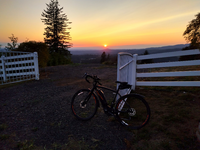At least that's what I told my wife. And just what did I do in your name?
Just ordered a Specialized Vado SL 5.0 EQ in yellow, my favorite bike color!
View attachment 180896
Many thanks to the many knowledgeable EBR members who shared their time and experience to get me to this point.
Why the SL 5 EQ? Just for something completely different, I wanted a fun, light, nimble, non-MTB flat-bar ebike as far removed from my 61 lb hub-drive commuter as possible. (The commuter will stay on as a utility/beach bike.)
First thought was a 32 lb Creo 2 Comp, but realistically, the drop bars would have been a mistake with my stiff neck. And properly outfitting the bare Creo would have taken it from barely within budget to a life sentence in the doghouse.
That makes the 36 lb SL 5 EQ my best bet. Under the Specialized satisfaction guarantee (no restocking fees on new bikes), I'll have 30 days to give my 3 main reservations a thorough test:
1. Will 240W and 35 Nm be enough help on local hills, many above 10%? Probably, but making no assumptions at age 76.
2. Will I have to cough up another $485 for a range extender and cable?
3. Will the stiff, unsuspended alloy frame be too jarring — even with the stock FutureShock 1.5 stem and the added Redshift suspension seat post?
Taking delivery in 8 days. Putting the odds of keeping this beauty at 90%. Fingers and toes crossed.
Thanks again for all the help, guys! Thoughts on accessories and upgrades welcome.

